Fishes
Media

Species Types
Scientific Name
Micropterus punctulatus
Description
The spotted bass inhabits permanent-flowing waters that are warmer and slightly more turbid than those where the smallmouth bass occurs. Note the form of its stripe and the length of its jaw.
Media
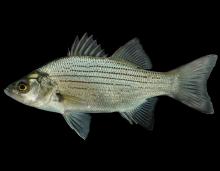
Species Types
Scientific Name
Morone chrysops
Description
The white bass is one of the most important game fish in Missouri’s large impoundments. It inhabits the deeper pools of streams and the open water of lakes and reservoirs.
Media

Species Types
Scientific Name
Morone saxatilis
Description
Primarily a marine species native to the Atlantic Coast of North America, the striped bass has been successfully stocked into several reservoirs in the United States. A silvery, elongated fish with prominent dark, horizontal stripes along the sides.
Media

Species Types
Scientific Name
Lepomis microlophus
Description
The redear sunfish is deep and slab-sided, with a small mouth, with the upper jaw not reaching past the front of the eye. In natural waters, it is confined to the southern half of Missouri, but it is widely stocked in small reservoirs and ponds.
Media
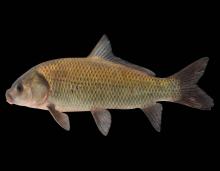
Species Types
Scientific Name
Ictiobus niger
Description
Compared to Missouri’s other buffalofishes, the black buffalo is less abundant and widespread, and of the three, it occurs most often in places with strong currents.
Media
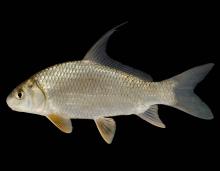
Species Types
Scientific Name
Carpiodes cyprinus
Description
Like our other carpsuckers, the quillback has a deep, rather thick body and a long, sickle-shaped dorsal fin. This silvery, hump-backed fish is widely distributed in Missouri.
Media

Species Types
Scientific Name
Catostomus commersonii
Description
The white sucker has fine scales and a short dorsal fin. The lips are covered with small bumps. A small-creek fish that occurs nearly statewide, but absent from the Bootheel lowlands and the southeastern Ozarks.
Media
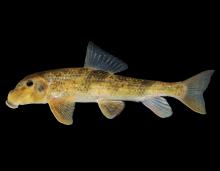
Species Types
Scientific Name
Hypentelium nigricans
Description
The northern hog sucker is one of the most abundant and widely distributed stream fishes in the Ozarks. It has a large, bony, square head. The mouth is at the tip of snout on the bottom. There are usually four dark crossbars.
Media

Species Types
Scientific Name
Moxostoma erythrurum
Description
The golden redhorse is a smaller-bodied sucker with large scales and a short dorsal fin. It occurs in Ozark and northeast Missouri streams.
Media
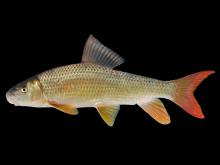
Species Types
Scientific Name
Moxostoma carinatum
Description
The river redhorse occurs throughout the Ozarks but is seldom common. It inhabits pools of clear, medium-sized to large streams with gravelly or rocky bottoms and continuous strong flow.
See Also


Media

Species Types
Scientific Name
Amphiuma tridactylum
Description
The three-toed amphiuma is an eel-like, completely aquatic salamander. It has very small forelimbs and hind limbs, each with three tiny toes. In Missouri it’s found only in the Bootheel region.
Media

Species Types
Scientific Name
Siren intermedia nettingi
Description
The western lesser siren is an eel-like, aquatic salamander with external gills, small eyes, small forelimbs with four toes, and no hind limbs. In Missouri, it’s found mostly in the Bootheel and northward in counties near the Mississippi River.
About Fishes in Missouri
Missouri has more than 200 kinds of fish, more than are found in most neighboring states. Fishes live in water, breathe with gills, and have fins instead of legs. Most are covered with scales. Most fish in Missouri “look” like fish and could never be confused with anything else. True, lampreys and eels have snakelike bodies — but they also have fins and smooth, slimy skin, which snakes do not.





















